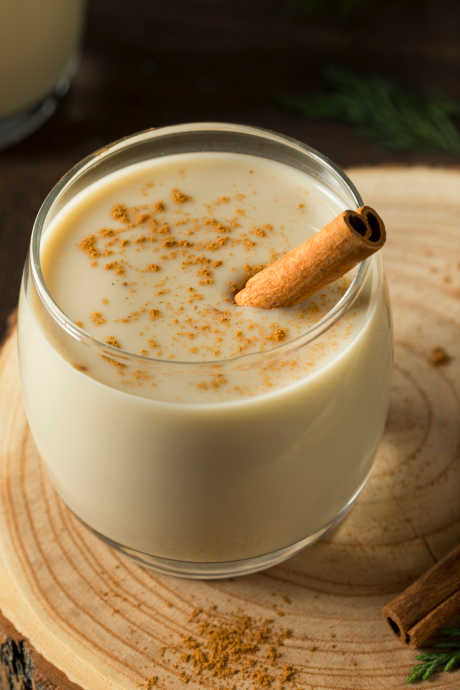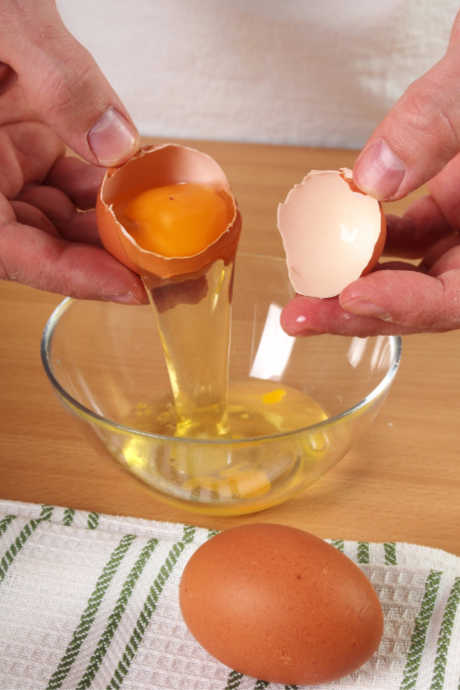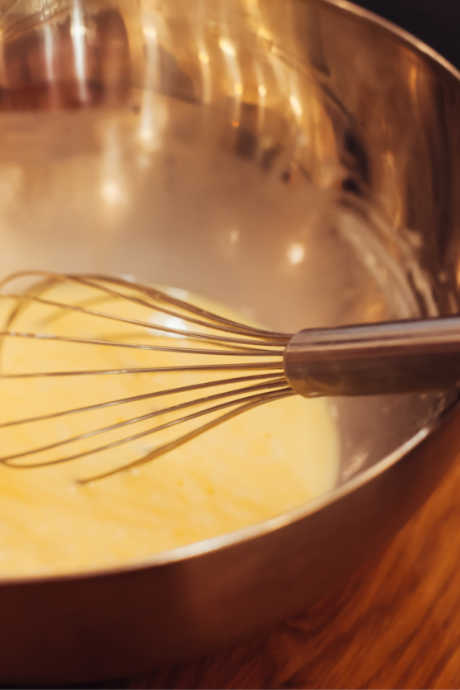Yes, Please or We'll Pass: Eggnog
Posted by Julie on Dec 9th 2019
'Tis the season to eat and drink all sorts of treats that aren't on the menu eleven months out of the year. Holiday specialties often include snacks and desserts, but the one we're exploring today is the classic Christmas drink eggnog. Apparently eggnog is nearly as polarizing as the age-old question of "Coke or Pepsi?" We decided to learn a bit more about this festive drink and see for ourselves whether we'd say "yes, please" or "we'll pass."
What Is Eggnog?
If eggnog hasn’t been a holiday staple at your house, you may be wondering what’s in this concoction. Eggnog is quite simple: milk, cream, eggs, sugar, and spices. You can add bourbon or rum if you like. Not surprisingly, eggnog is high in sugar, fat, and calories. It’s not meant for quenching your thirst. In fact, a serving of eggnog is only four ounces, or half a cup. Vinepair describes imbibing eggnog as similar to “drinking melted ice cream.”

The FDA sets standards for what can be marketed as eggnog, just like ice cream and sherbet. In the case of eggnog, the standard is the amount of egg yolk in the finished product, which must be at least 1% by weight.
The History of Eggnog
Although eggnog likely originated in Europe as “posset” -- a sweet and spicy drink made with hot milk and wine -- it is nearly as American as apple pie and baseball. In colonial times, eggs and milk were plentiful thanks to an abundance of chickens and cows. George Washington mixed up batches of eggnog with a recipe that’s nearly identical to the modern recipes we found. (Other than the quantity of liquor in Washington’s recipe, that is. He included both whiskey and rum, along with brandy and sherry.) Even now, the United Kingdom doesn’t appreciate eggnog nearly as much as we do here in the US.
Eggnog and Food Safety
The cartons of eggnog sold at the grocery store have been pasteurized, so you don’t have to be concerned about the hazards of raw eggs. But if you plan to make homemade eggnog, we encourage you to use good food safety habits. Raw eggs are at risk for containing salmonella bacteria. That’s why you shouldn’t eat raw cookie dough or make eggnog without tempering your eggs. (Confession: We do help ourselves to a spoonful or two of raw cookie dough, but somehow that seems different from slurping down a cup of eggnog.)

Most homemade eggnog recipes call for heating the liquid mixture, including the egg yolks, to 160ºF. That temperature is high enough to kill salmonella. But if your recipe also calls for whisking raw egg whites into your eggnog before serving, proceed with caution. Either use pasteurized liquid eggs, or whisk in some whipped cream instead. Finally, it doesn’t matter if you add as much liquor as George Washington did; alcohol may prevent bacteria from growing, but it won’t kill the existing salmonella.
How to Make Homemade Eggnog
Are you ready to make eggnog in your own kitchen? We browsed several homemade eggnog recipes, and we’re happy to report they’re all pretty similar. The biggest differences you’ll find have to do with the spices and flavorings, whether the egg yolks are tempered, and whether raw egg whites are added before serving.
For safety’s sake, we tried this recipe from Delish, which calls for tempering the egg yolks and whisking in whipped cream in place of egg whites. We also chose this one because it includes cinnamon, nutmeg, and vanilla extract. We’ve covered the details of tempering eggs before, but just remember to slowly add the hot milk and spices to the egg yolks whisked with sugar. If you combine everything all at once, the temperature will rise too quickly and the eggs will scramble.

Once you’ve combined the two mixtures, heat gently until the temperature reaches 160ºF. It’s helpful to have a thermometer, but you can also gauge it based on whether your eggnog has thickened enough to coat the back of a spoon. Then chill the mixture before serving. You can stir whipped cream into your eggnog to mimic the effect of egg whites without the risk of salmonella.
If you want to make homemade eggnog the old school way, check out this recipe from Alton Brown. Even though you won’t be standing over a hot stove, be forewarned that you’ll either need two stand mixers or quickly wash out the bowl and whisk attachment between mixtures.
Start by beating the egg yolks, and then add the sugar. Once those two ingredients are well-combined, whisk in the milk, cream, and nutmeg. Set this mixture aside and wash out your bowl, or move to your spare stand mixer. Then beat the egg whites with a tablespoon of sugar until they hold stiff peaks. Finally, whisk the egg whites into the eggnog, and chill before serving.
Homemade Eggnog: We’ll Pass
One of our kids wouldn’t even try it, and this kid will munch his way through a bag of lettuce as if it were a bag of chips. Two more kids each took a cautious sip and declared they were finished. The adult in the room thought it tasted surprisingly good, but she’s not going to waste calories on a drink that’s primarily eggs and cream. How about some French vanilla ice cream instead?
We’ll close with this exchange from BravoTV that underscores the all or nothing nature of eggnog. Matt Russoniello calls it the best and only relevant holiday beverage. Kristyn Pomranz likens eggnog to drinking muffin batter (and that’s the most flattering of the comparisons she makes). Love it or hate it, eggnog is an indisputable holiday classic.
 Free shipping over $49
Free shipping over $49










